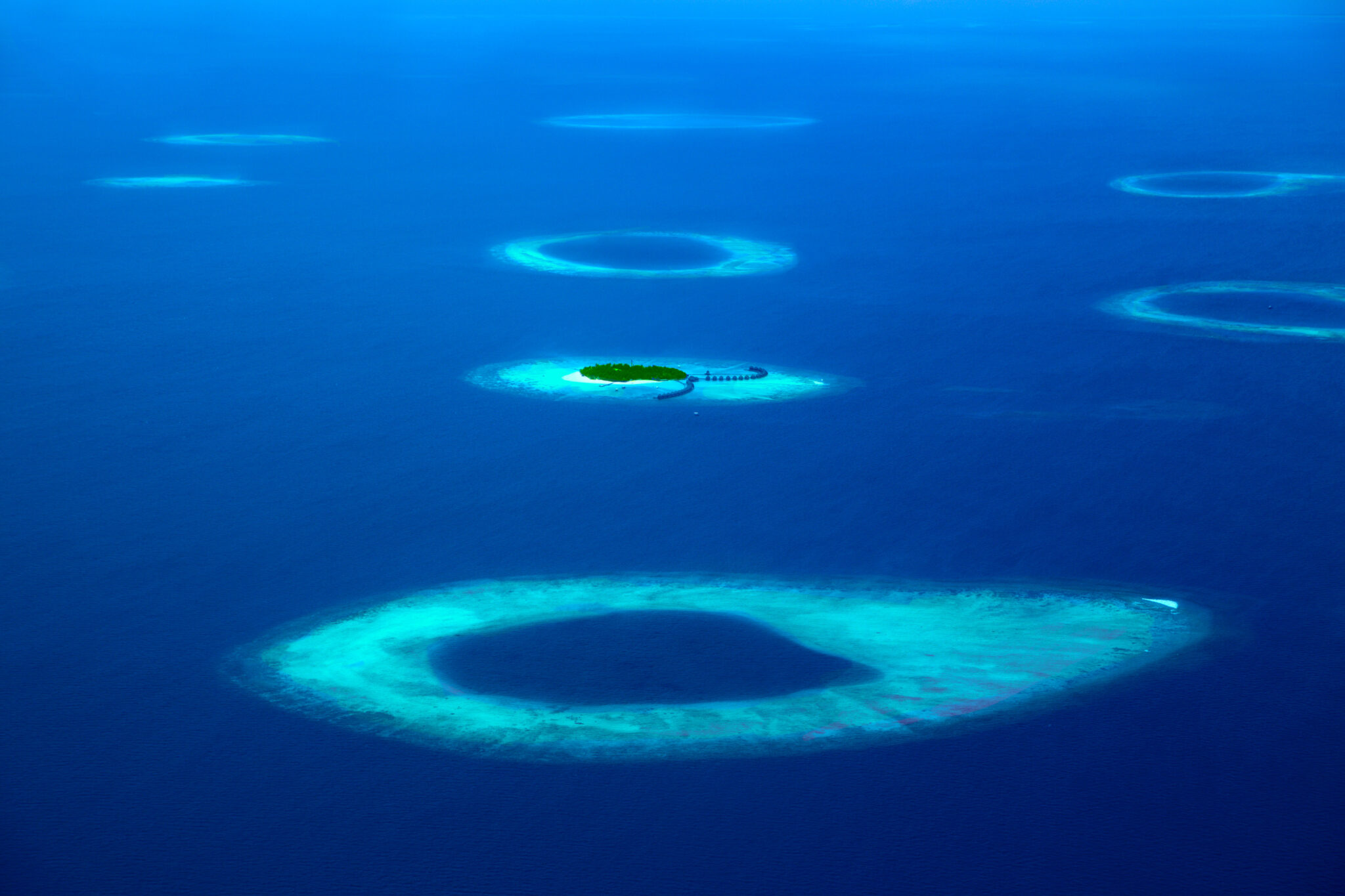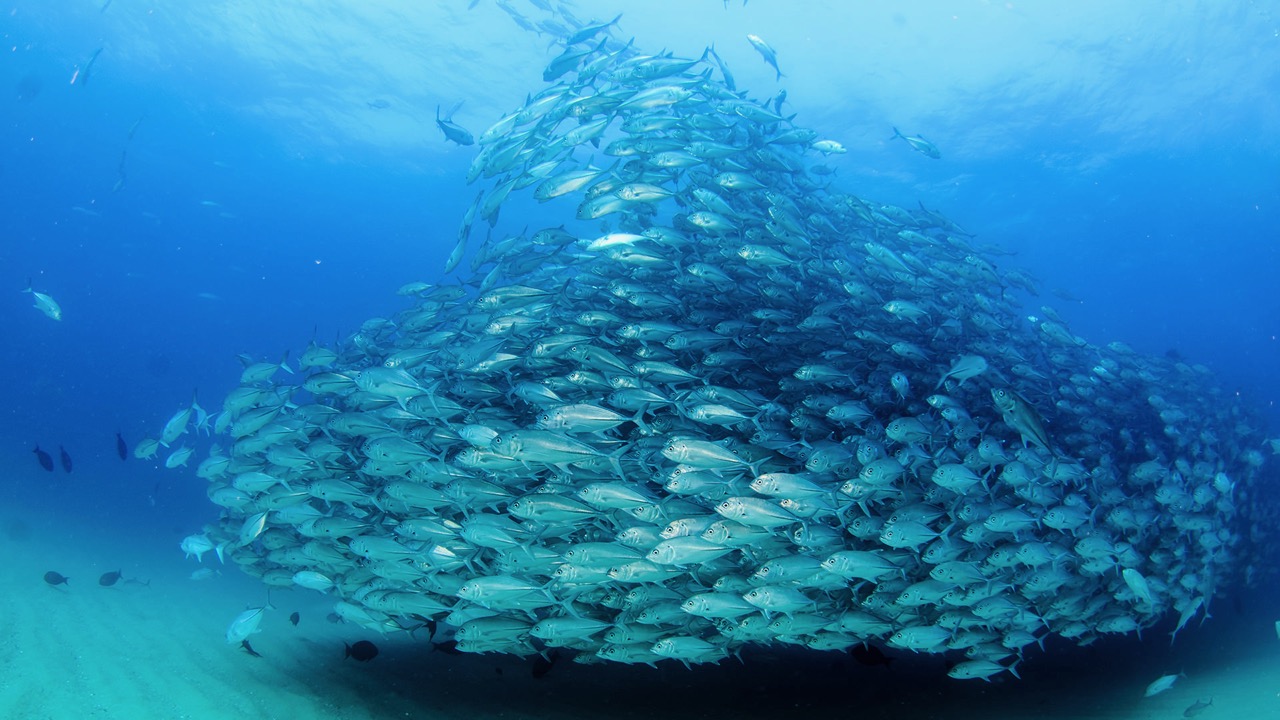Every year, new scuba diving destinations are discovered. Many of them are in hard-to-reach places, requiring lengthy boat trips and an Advanced Open Water Diver certification. Luckily, the liveaboard industry is constantly growing, building new and better ships for reaching these destinations. Whether you wish to visit classic favorites, like Komodo, or try a new destination, like Sudan, you’ll likely find a dive boat to take you to the best liveaboard destinations for advanced divers.
With so many liveaboard destinations to choose from, it can be difficult to pick the perfect liveaboard vacation. Consider these 12 amazing-yet-advanced scuba destinations for your next adventure.

1. Cocos Island, Costa Rica
Located 342 miles (550 kilometers) off the west coast of Costa Rica, Cocos Island is famed for its scalloped hammerhead shark encounters. To get there, you’ll need a liveaboard to take you on the 36-hour crossing to this lonely seamount. Heavy current attracts several pelagic species in addition to the hammerheads, including mobula rays, manta rays and the occasional whale shark. This same current reserves this liveaboard heaven to advanced divers only.
- Departure Port: Puntarenas, Costa Rica
- Typical Liveaboard Length: 8 to 10 Nights
- Featured Creatures: Scalloped Hammerheads
- When To Go: June to December

2. The Galapagos Islands, Ecuador
Famous among divers and non-divers alike, the Galapagos Islands is a bucket list destination above and below the water. While it is possible to dive in the Galapagos from a land-based operation and as a beginner diver, the best diving areas (Wolf and Darwin Islands) are accessible only by liveaboard and restricted to advanced divers. In just one week of diving, you’ll see dramatic scenery dotted with blue-footed boobies, playful sea lions, schools of hammerhead sharks, feeding marine iguanas and diving penguins. What more can you ask for?
- Departure Port: San Cristobal, Ecuador
- Typical Liveaboard Length: 7 to 10 Nights
- Featured Creatures: Hammerheads, Galapagos Sharks, Manta Rays, Marine Iguanas and Whale Sharks
- When To Go: June to December

3. Socorro, Mexico
Extending well out into the Pacific, Mexico holds quite a few of the best liveaboard destinations in the world, including the Sea of Cortez, Cozumel and the Revillagigedo Islands (a.k.a. Socorro). Currents surrounding the latter archipelago attract humpback whales, manta rays and hammerhead sharks. These islands are at least 24 hours by boat from the mainland, and most liveaboards visiting the area require divers to hold at least an Advanced Open Water Diver certification.
- Departure Port: Cabo San Lucas, Mexico
- Typical Liveaboard Length: 5 to 10 Nights
- Featured Creatures: Manta Rays, Humpback Whales, Whale Sharks, and Hammerheads
- When To Go: November to May
4. Indonesia
Home to over 13,000 islands, Indonesia is best explored by liveaboard. From Raja Ampat to Ambon and Komodo, there are plenty of exotic itineraries throughout this island nation. Some areas boast the weirdest macro life you’ve ever seen, while others are home to whale sharks, mola mola and manta rays. Underwater volcanoes, black sand flats and gorgeous soft corals are just a few of the dive environments found here. You could spend a whole season diving in Indonesia and not cover it all. While much of the diving is beginner-friendly, liveaboard itineraries in Indonesia generally include current-heavy and deep dives, perfect for the advanced diver.
- Departure Port: Various, but generally, Sorong for Raja Ampat and Labuan Bajo for Komodo.
- Typical Liveaboard Length: 5 to 12 Nights
- Featured Creatures: Manta Rays, Whale Sharks, Mola Mola and Hundreds of Macro Critters.
- When To Go: Year-round. (October to April for Raja Ampat. April to November for Komodo.)

5. Maldives
With 26 natural atolls and thousands of dive sites, the Maldives is the perfect destination for a dive safari. White sand banks and luxury yachts dot a landscape of sapphire-colored sea in this island paradise. Below the surface, a network of pinnacles and channels attracts hammerhead sharks, manta rays and whale sharks among hundreds of other reef-dwelling creatures. While these seas may appear peaceful, diving in the northern and southern sections of the Maldives can be challenging due to the geography of the atolls. Most liveaboards in these areas require guests to have logged at least 50 dives.
- Departure Port: Male, Maldives
- Typical Liveaboard Length: 7 Nights
- Featured Creatures: Manta Rays and Whale Sharks
- When To Go: December to April
6. Tubbataha Reef, Philippines
Home to 600 species of fish, 300 species of coral, 11 species of shark and 13 whale and dolphin species, Tubbataha Reef Natural Park is a UNESCO World Heritage Site situated 93 miles (150 kilometers) southeast of Puerto Princesa in the Philippines. The only way to reach this series of shallow coral reefs and sheer drop-offs is by liveaboard. There are so many pristine dive sites surrounding these two atolls that you’ll need at least a week to get your fill!
- Departure Port: Puerto Princesa, Philippines
- Typical Liveaboard Length: 6 to 13 Nights
- Featured Creatures: 13 Species of Shark, Manta Rays and Sea Turtles
- When To Go: Mid-March to Mid-June

7. Fiji
Known as the “Soft Coral Capital of the World,” Fiji’s outer reefs boast strong currents, creating some of the best shark and pelagic dives in the world. With qualifications like these, Fiji is a must-dive location for advanced divers. Recommended dive sites include the world-renowned Beqa Lagoon, Shark Reef and Viti Levu Coral Coast. While land-based diving is possible in Fiji, a dive charter will certainly allow for more exploration of unique and uncrowded dive sites.
- Departure Port: Nadi, Viti Levu
- Typical Liveaboard Length: 7 to 10 Nights
- Featured Creatures: 9 Species of Shark, including Bull Sharks, 12 Species of Whales and Hundreds of Reef Fish Species
- When To Go: April to November

8. Palau
With a rare variety of dive environments, Palau is wild and beautiful with wrecks, sheer walls, high-speed drifts and blue holes. The dive site called Blue Corner is worth the journey alone. Here divers attach themselves to the wall using a reef hook in order to watch huge numbers of pelagics drift by, including lots of sharks. While Koror is the main hub for the islands, many of the dive sites are over an hour away by speedboat. To get the most out of your diving trip, you’ll want to book a liveaboard.
- Departure Port: Koror or Malakal
- Typical Liveaboard Length: 7 to 10 Nights
- Featured Creatures: Whitetip Reef Sharks, Grey Reef Sharks, Eagle Rays, and Tuna
- When To Go: October to May

9. The Deep South, Egypt
Egypt’s Red Sea is a destination for all scuba diving abilities, but the excellent southern dive sites offer an off-the-beaten-path alternative to those near Sharm El-Sheikh. St. Johns, Daedalus, Brothers, Fury Shoals and Elphinstone are all big-ticket dives for liveaboard patrons. With that in mind, boats sailing Deep South itineraries are large and comfortable, providing a range of luxuriousness. On the whole, the sites in southern Egypt are more suitable for advanced divers. In addition, many operators stipulate a minimum of 30 dives, as these areas are deep and can experience some strong currents.
- Departure Port: Port Ghalib or Marsa Alam, Egypt
- Typical Liveaboard Length: 7 Nights
- Featured Creatures: Hammerheads, Oceanic Whitetips, Thresher Sharks, Dolphins and Dugongs
- When To Go: September to November and April to June

10. The Great Barrier Reef, Australia
The Great Barrier Reef is an ideal destination for beginners and advanced divers alike. Beneath the surface of the largest barrier reef system in the world lie exciting drop-offs, reefs, and wrecks ideal for advanced divers. One of the most pronounced sites for those in search of sharks is Osprey Reef, a seamount around 300 km (186 miles) from Cairns. In addition, North Horn dive site, which holds the Great Barrier Reef’s strongest current, gives divers the chance to see silvertips, grey reef sharks and hammerheads!
Towards the coast of Queensland, Advanced divers can take advantage of the Yolanga‘s depth of 33 meters (108 feet). This wreck is home to giant groupers and sea snakes amongst the remains of the sunken vessel.
- Departure Port: Cairns or Port Douglas, Australia.
- Typical Liveaboard Length: 3 to 7 Nights
- Featured Creatures: Hammerheads, Mantas, Potato Cod, Reef Sharks, Giant Groupers
- When To Go: June to November (best marine life and visibility), December to May (warmer waters and summer season)

11. Malpelo Island, Colombia
Here in the “Shark Capital” of the world, advanced divers can experience unforgettable underwater moments in Malpelo. Located far offshore, operators may take you to La Nevera (The Fridge) when you first arrive after the long liveaboard journey. Here divers have a chance to witness hundreds of schooling hammerheads thanks to strong currents. El Bajón is another great dive site for advanced divers. This seamount acts as a pinpoint for pelagics, like jacks and barracuda
Malpelo Islands are not for the faint-hearted; currents and marine life here can be thrilling. These features make it an exceptional destination for those looking for their next camera-worthy adventure.
- Departure Port: Buenaventura, Colombia
- Typical Liveaboard Length: 7 to 10 Nights
- Featured Creatures: Hammerheads, Galapagos Sharks, Silky sharks, Eagle Rays and Moray Eels
- When To Go: June to November (for hammerheads and whalesharks), December to May (calmer conditions and visibility)

12. Sudan
Sudan‘s water world is still home to Jacques Cousteau’s underwater habitat, “Conshelf II,” now covered with marine life and coral. Strong currents across the area attract schools of hammerheads and barracudas – if you’re lucky! Many liveaboards will head down to the Angarosh dive site, around 30 km (19 miles) from the Sudanese mainland. The name translates to “mother of sharks,” and, as one might guess, the site is packed with pelagics.
For wreck lovers, one of the best-preserved WWII wrecks awaits. Umbria Wreck is so well preserved that wine bottles, bombs and vehicles can be explored by divers at the site. It’s now peppered with soft corals and marine life across the vessel. The largest species here often include groupers and moray eels. In short, Sudan is remote, rich with dive sites and relatively untouched! It’s a hotspot for liveaboard lovers looking for diversity.
- Departure Port: Port Sudan, Sudan
- Typical Liveaboard Length: 7 to 10 Nights
- Featured Creatures: Hammerheads, Whute tips, Barracuda, Manta Rays, Dolphins
- When to Go: March to June (warm water and hammerheads), September to November (great visibility)
Ready To Dive in?
If you’re not an Advanced Open Water Diver yet, sign up and start the course online here. When you’re ready and want to book any of these liveaboard diving holidays, get in contact with one of the PADI Travel scuba travel experts. We’ll be happy to provide you with more information. Remember, the Seven Seas are yours to explore!
Written by Sandro Lonardi




